This month we mourn the passing of Eric Samuelsen and Clark Goble. There were starred reviews for new books by Josh Allen, Nancy Campbell Allen, Karin Anderson, Katie Henry, Mackenzi Lee, and Anne Perry. Dave Butler produced a ton of new stories. There are new plays by Ted Bushman, Morag Shepherd, Matthew Ivan Bennett and Shawn Francis Saunders. Garrett Batty’s latest film, Out of Liberty, is now in theaters. Honors for writing were given to Patrick Madden, Brad Torgersen, and Larry Correia. Please send news and announcements to mormonlit@gmail.com.
News
 Eric Samuelsen, a towering figure in Mormon and Utah theater, passed away on September 20, 2019. You can read AML’s tribute to Eric Samuelsen and Les Roka’s tribute, Eric Samuelsen (1956-2019): A titan of the Utah Enlightenment.
Eric Samuelsen, a towering figure in Mormon and Utah theater, passed away on September 20, 2019. You can read AML’s tribute to Eric Samuelsen and Les Roka’s tribute, Eric Samuelsen (1956-2019): A titan of the Utah Enlightenment.
We also lost Clark Goble in early September. Clark had been involved in many LDS internet sites since the dawn of the internet age, including AML-list since 1995.
Mormon Scholars in the Humanities Call for Papers for their March 26-28, 2020 conference at Oxford University. The theme is “Aesthetics”. Proposals are due by Nov. 1.
The 2019 Dragon Awards, a speculative fiction awards given at Dragon Con since 2016, were announced. Brad Torgersen’s A Star-Wheeled Sky won the Best Science Fiction Novel Award, and Larry Correia’s House of Assassins won the Best Fantasy Novel Award.
Patrick Madden. “Unpredictable Essay”. Named a “notable essay of 2018” in Best American Essays 2019. Madden says he wrote the story “using Botnik’s predictive text generator (after I fed it my first two books), and which was originally published in The Normal School.”
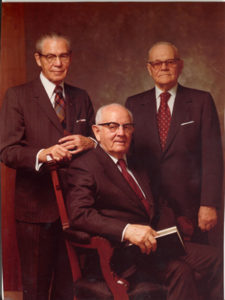 Spencer W. Kimball and the founding of the Association for Mormon Letters. A review of the founding of AML in 1976, and the First Presidency meeting with Church Historian Leonard J. Arrington about the organization that summer.
Spencer W. Kimball and the founding of the Association for Mormon Letters. A review of the founding of AML in 1976, and the First Presidency meeting with Church Historian Leonard J. Arrington about the organization that summer.
Critical scholarship
Susan Howe and Casualene Meyer, “The Demands of Poetry: A Review of Collections Published in 2018 by Latter-day Saint Authors.” BYU Studies, 58:1. They review poetry collections by James Goldberg, Deja Earley Ruddick, Bob Rees, Karen Kelsay Davies, Lance Larsen, Heather Harris-Bergevin, Javen Tanner, Lara Candland Asplund, and Dove Song, edited by Tyler Chadwick, Dayna Kidd Patterson, and Martin Pulido.
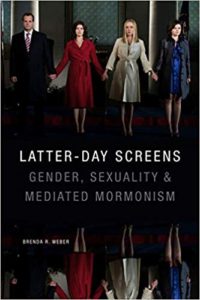 Brenda R. Weber. Latter-day Screens: Gender, Sexuality, and Mediated Mormonism. Duke University Press, Sept. 13. “From Sister Wives and Big Love to The Book of Mormon on Broadway, Mormons and Mormonism are pervasive throughout American popular media. In Latter-day Screens, Brenda R. Weber argues that mediated Mormonism contests and reconfigures collective notions of gender, sexuality, race, spirituality, capitalism, justice, and individualism. Focusing on Mormonism as both a meme and an analytic, Weber analyzes a wide range of contemporary media produced by those within and those outside of the mainstream and fundamentalist Mormon churches, from reality television to feature films, from blogs to YouTube videos, and from novels to memoirs by people who struggle to find agency and personhood in the shadow of the church’s teachings. The broad archive of mediated Mormonism contains socially conservative values, often expressed through neoliberal strategies tied to egalitarianism, meritocracy, and self-actualization, but it also offers a passionate voice of contrast on behalf of plurality and inclusion. In this, mediated Mormonism and the conversations on social justice that it fosters create the pathway toward an inclusive, feminist-friendly, and queer-positive future for a broader culture that uses Mormonism as a gauge to calibrate its own values.”
Brenda R. Weber. Latter-day Screens: Gender, Sexuality, and Mediated Mormonism. Duke University Press, Sept. 13. “From Sister Wives and Big Love to The Book of Mormon on Broadway, Mormons and Mormonism are pervasive throughout American popular media. In Latter-day Screens, Brenda R. Weber argues that mediated Mormonism contests and reconfigures collective notions of gender, sexuality, race, spirituality, capitalism, justice, and individualism. Focusing on Mormonism as both a meme and an analytic, Weber analyzes a wide range of contemporary media produced by those within and those outside of the mainstream and fundamentalist Mormon churches, from reality television to feature films, from blogs to YouTube videos, and from novels to memoirs by people who struggle to find agency and personhood in the shadow of the church’s teachings. The broad archive of mediated Mormonism contains socially conservative values, often expressed through neoliberal strategies tied to egalitarianism, meritocracy, and self-actualization, but it also offers a passionate voice of contrast on behalf of plurality and inclusion. In this, mediated Mormonism and the conversations on social justice that it fosters create the pathway toward an inclusive, feminist-friendly, and queer-positive future for a broader culture that uses Mormonism as a gauge to calibrate its own values.”
Short Stories
D. J. Butler. “The Seven Nipples of Molly Kitchen.” In David Afsharirad, ed. The Chronicles of Davids. Baen, Sept 2019.
D. J. Butler. “The Dead Who Care.” In Parallel Worlds: The Heroes Within. Source 7 Productions, Oct. A Hiram Woolley story (a Cunning Man ghost tale, about the Mountain Meadows Massacre).
D. J. Butler. “The Greatest Horse Thief in History”. In Straight Outta Deadwood. Baen, Oct. A Cunning Man story.
D. J. Butler. “The Path of the Hunter.” In Negotiation. Oct.
D. J. Butler. Twenty-Five Dollars and No Residuals,” In Cursed Collectables. Prolific Ink, Sept. A bluesman sells his soul and now faces a reckoning.
Dustin Steinacker. “Two Worlds Apart“. Interzone. Sept.-Oct 2019. James White Award-winning story
Magazines
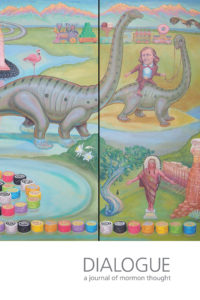 The Fall 2019 issue of Dialogue: a journal of Mormon thought is now available.
The Fall 2019 issue of Dialogue: a journal of Mormon thought is now available.
The issue includes a novella, “The Sacrifice”, by Steven Peck.
Poetry by Tyler Clark, Dennis Marden Clark, Anita Tanner, and Michael Hicks.
The issue’s striking cover, Kent Christensen’s “Secrets of the Great Salt Lake”, gave rise to a dialogue between Christensen, Dialogue art editor Andi Pitcher Davis, Rita R Wright, director of the Springville Museum of Art, and Kristine Haglund, Dialogue editor emeritus, titled “The Absurd in Art and Mormonism”.
Book Reviews:
Madison Bowman reviews George Handley, “If Truth Were a Child: Essays”.
Allison Hong Merrill reviews Melissa Inouye. “Crossings: A Bald Asian American Latter-day Saint Woman Scholar’s Ventures through Life, Death, Cancer & Motherhood”
Kylie Nielson Turley reviews Steven L. Peck’s novel “The Tragedy of King Leere, Goatherd of the La Sals”
Jenny Jones Webb reviews Eric D. Huntsman, “Becoming the Beloved Disciple: Coming into Christ through the Gospel of John.”
Journal of Book of Mormon Studies. Vol. 28, 2019.
“Alma’s Hell: Repentance, Consequence, and the Lake of Fire and Brimstone,” by Kylie Nielson Turley. Turley’s essay provides an intense investigation of the experience of Alma the Younger at Ammonihah. It’s filled with more textual insights than can be taken in on one reading. I think it’s safe to predict that Turley’s essay will change how the story of Ammonihah is read. And so we’ve made it available for free for the next thirty days here. I should also mention, Turley is currently working on a book about Alma for the Maxwell Institute’s forthcoming series on the Book of Mormon, Brief Theological Introductions.
In “Narrative Doubling and the Structure of Helaman,” Kim Matheson Berkey undertakes a literary analysis of the structure—or really, of the lack of structure—in the Book of Helaman. Dramatically understudied, the Book of Helaman seems diffuse and without a clear principle of organization. Berkey does the important work of discerning the shape and intentions of the masterpiece book readers of the Book of Mormon tend to ignore. She’s working on the Helaman volume for the Brief Theological Introductions. Also, among the book reviews is Scott Hales’ review of Mette Harrison’s novel The Book of Laman.
New books and their reviews
Traci Hunter Abramson, Clair M. Poulson, Gregg Luke, and Stephanie Black. Entangled. Covenant, Sept. 1. Suspense novellas.
Josh Allen. Out to Get You. Holiday House, Sept. 3. Middle grade short stories. A collection of horror stories is the debut book by a previous editor of Irreantum. Illustrated by Sarah Coleman. Pitched as a mashup of Stephen King and The Twilight Zone, with a dash of Jon Scieszka’s sensibility, the 13 tales feature a creepy, weird, and humorous vibe. BYU-Idaho faculty.
Kirkus: A collection of curious incidents—13, naturally—for unsuspecting readers. A friend mysteriously vanishes. A kid runs into the devil on the way to school. The figures on a street sign change places. A stain on the school cafeteria’s floor is more than just a stain—it has a mouth. A straight-laced teacher gets a creative form of discipline for her “problematic” classroom-management style. Paper-towel dispensers produce ominous messages. Someone’s missing marker is used to make art that brings to life a new invasive species. Even the shadows get bad ideas. For everything, there’s a price or a consequence. Which kids can beat the odds and figure out a way for their lives to go back to normal? Or, is normal the real myth in this wondrously eerie world? Allen’s debut is mostly plot-focused, a quick (but not too quick) relay race from story to story—the longest of which spans 15 pages. Mostly creepy instead of bone-chillingly terrifying, the collection’s overall tone is more Twilight Zone than Scary Stories To Tell in the Dark. It’s also a textbook example of how horror contextualizes social anxieties, particularly those relevant to school-aged youth. Coleman mixes hand lettering with scratchy, sketchy linework to create single- or double-page black-and-white illustrations that accentuate each story. With a lack of racial descriptors, the cast presumes a white default. Tasty, bite-sized bizarreness for brave preteens.
Booklist (Starred): “This haunting anthology will plunge young horror enthusiasts into their darkest dreams . . . Allen expertly weaves intricate, relatable details from the tween experience with elements of the supernatural to present readers with a baker’s dozen of chilling tales”
Nancy Campbell Allen. The Lady in the Coppergate Tower. Shadow Mountain, Aug. 5. Historical fantasy/romance. Victorian.
PW (Starred): Allen’s third visit (after Kiss of the Spindle) to her lightly supernatural, steampunk fairy tale world is a clever riff on the “Rapunzel” story that blends exotic undersea travel with a dark mystery and a glee-inducing, respect-first romance between awkward colleagues. The setting seamlessly merges mechanization and magic with Victorian social concerns. Mysterious Romanian count Dravor Petrescu arrives in London claiming to be the unknown uncle of Hazel Hughes, a brilliant physician’s assistant and healer. All her life, Hazel has dreamed of having a twin; Petrescu says he has the twin in his castle, Coppergate, and wants to take Hazel to meet her. Hazel’s employer, friend, and secret admirer, surgeon Dr. Samuel MacInnes, insists on accompanying her on the count’s submarine. Allen’s comedic writing peaks in Sam’s sarcastic automaton butler, Eugene, playing on the tropes of both the overmeticulous British servant and the hypercompetent android. Though the novel stands alone perfectly, series fans will appreciate cameos by the strong heroines of the earlier installments. Readers who love witty adventure-romances between competent, mutually reliant equals will gobble this one up.
Karin Anderson. Before Us Like a Land of Dream. Torrey House Press, May 28. Literary fiction. Ex-Mormon. Teaches at UVU.
Follows a disheartened Utah mother traveling an evocative route through the sites of her arid Western ancestry. As her narration fades, the dead speak their stories: a ragged Mormon boy; a hoarder’s queer son; descendants of British squatters. They give no answers, but conjure vivid moments set in iconic—and diminishing—American places.
Julie Nichols. “Anderson is a ventriloquist, channeling the voices of a multitude of spokespersons whose DNA, defiances, differences, and determinations magnetize them to the American West.
LJ (Starred): In this autobiographical first novel from Pushcart Prize winner Anderson, the narrator is 54 and in the chokehold of a personal crisis when she undertakes a road trip from Utah to Safford, AZ, a small town near the Mexico border where her father was born. She feels a kinship with her grandmother, who was forced to leave behind the grave of a stillborn baby when the family moved, and at the cemetery imagines herself as a time traveler conversing with mourners gathered by the baby’s graveside. Soon she’s being guided by her ancestors, particularly her grandfather’s older sister, Iola, who appears in the passenger seat beside her, talking about the early times in Utah and how the neighboring Shoshone were kinder to the settlers than the settlers were toward one another. As other voices take over, we learn about the narrator’s siblings; her difficult father; their large, fractured Mormon family; and the part their long-dead Norwegian, Danish, and German ancestors played in building the vast American plains. VERDICT Anderson’s fictionalized journey through time was prompted by her mother’s declining health, her son’s hospitalization, rampant wildfires plaguing the region, and a beloved country severely divided. A work of universal appeal.
Kirkus: In powerful prose, she lets a chorus of voices tell their own often surprising, sometimes heartbreaking stories. People from several generations of one woman’s family gain vividly individual presence, recounting their lives in the American West as it moves from wilderness to modernity.
Camille Andros. From a Small Seed: The Story of Eliza Hamilton. Henry Holt, Oct. 22. Picture book.
Heidi Ashworth. The Murder in Mirth. Dunhaven Place, Oct. 1. Historical mystery.
Joanna Barker. Secrets and Suitors. Covenant, Oct. 1. Regency romance. 4th novel.
Julie Berry and April Lee. Don’t Let the Beasties Escape this Book! Henry N. Abrams, Sept. Picture book. “Godfrey, a peasant boy who works for the lord and lady of the castle, finds a bestiary, or illustrated book of beasts, on the way to do his chores one morning. He begins inventing his own story, placing “Sir Godfrey” at the center of numerous heroic deeds. Sir Godfrey battles a lion, tames a unicorn, defeats a griffin, conquers a bonnacon, and triumphs over a dragon. Godfrey does not realize that each time he says the name of an animal, it magically emerges from the book, causing mayhem and inadvertently accomplishing his chores. The laughs pile up and the tension mounts: When will Godfrey realize that all this outrageous stuff is going on?”
Julie Berry and Annie Won. Long Ago on a Silent Night. Orchard Books, Sept. Picture book. “In this poignant and lyrical story by Printz Honor recipient Julie Berry, the miracle of Christmas and the promise in every new child come together in a luminous celebration of unconditional love and hope. With tender, incandescent illustrations by Annie Won, the wonder of the nativity story and the marvel of every baby come alive in a wholly extraordinary book for families everywhere.”
Orson Scott Card. Lost and Found. Blackstone, Sept. 10. YA fantasy.
PW: In this uneven novel by Card, a young man with the “micropower” to locate lost items must explore new applications of his abilities after the police enlist him to find a kidnapped girl. At first, Ezekiel Blast, 14, is reluctant to help; previous misunderstandings over his abilities have left him branded a thief with a healthy, even obnoxious, distrust of authority. But with the assistance of his new friend Beth, a girl with proportionate dwarfism, and a support group dedicated to those with similarly unusual powers, Ezekiel succeeds in tracking down the missing child. Then Beth is taken, and Ezekiel must find her before she suffers a terrible fate. While Card starts with an intriguing premise, the story devolves into ongoing commentary and extrapolation about the micropowers. In addition, many of the younger characters, especially Ezekiel and Beth, sound inauthentic and overly adult. Readers may also be disturbed by the narrative’s sudden twist into poorly integrated darker material, such as the introduction of a pedophiliac pornography/snuff ring. While this story raises provocative questions about family, friendship, and the value of individual abilities, the irregular narrative tone and disjointed parts fail to cohere.
Kirkus: A teen with the micropower (much smaller than a superpower) of finding lost things is asked to help in a kidnapping investigation. Long ostracized as a thief because no one believes him, freshman Ezekiel has tried to tamp down his ability to recognize lost items and compulsion to return them. His loner act is interrupted by Beth, an almost 14-year-old sophomore with proportionate dwarfism who wants to befriend him so that his isolation bubble can protect her from the bullying she faces. He’s jerkish as a defense mechanism; she’s persistent; they’re both precocious intellectuals with snarky, dark humor—most importantly, she believes in and encourages his micropower. Also encouraging him is a desperate detective who wants Ezekiel’s help in a missing child case (though Ezekiel’s more accustomed to being accused and mistreated by police). The pacing of the multilayered mystery enables a buildup of dread leading to the revelation of how incredibly dark the crime story really is. The story’s psychological elements—both traumatic fallout and beautiful interpersonal relationships—are given breathing space in a satisfying denouement. Physical and racial descriptors are largely absent, creating a white default. The slur “Paki” is used without contextualization in reference to a Bangladeshi American character. Despite the infantilizing descriptive phrase “pitter patter of little feet,” Beth is portrayed as strong and capable. A winning combination of wit, a twisted crime drama, and a fresh take on teens with powers.
R. A. Christmas. Leaves of Sass. Sept. Poetry. With a forward by Robert A. Rees.
Sarah M. Eden. The Lady and the Highwayman. Shadow Mountain, Sept. 3. Historical romance, set in 1830s London.
PW: Eden’s sweet, lighthearted historical pits a pair of popular writers against Victorian London’s dark underbelly. Famed penny dreadful author Fletcher Walker rescues abused children on behalf of the secretive, charitable Dread Penny Society, which fights for and educates the city’s unfortunates. He’s also trying to hunt down his enigmatic rival writer, Mr. King. Lowborn Fletcher finds unexpected commonalities with literary writer Elizabeth Black, a girls’ school headmistress. Elizabeth joins Fletcher’s adventures fighting the criminal element but hides her own potentially dangerous secrets from him until she can reveal them on her own terms. Their slowly building, chaste, period-appropriate romance delivers congenial interludes throughout their assorted investigations into such villains as a cruel, sadistic chimney sweep and a shadowy arsonist who threatens Elizabeth’s school. Chapters of their respective serials are interspersed throughout, providing a subtle view into the authors’ emotional lives. Dedicated readers of historical romance will enjoy many nods to the origins and attractions of their genre.
LJ: Eden’s latest entry in the “Victorian” series (after Ashes on the Moor) is a joy to read, filled with adventure, suspense, two characters longing for love but protective of their secrets. Two original penny dreadfuls interspersed throughout make this story even more impressive.
Amy Harmon. The Firs Girl Child. 47 North, Aug. 20. Fantasy. Vikings.
Katie Henry. Let’s Call it a Doomsday. Harper Collins/Tegan, August. YA. Non-Mormon author.
PW (Starred): High school student Ellis Kimball suffers from severe anxiety, which stems from her fixation on how the world might soon end. Much to the chagrin of her family and therapist, she throws much of her energy into buying food and supplies to survive the impending apocalypse. While Ellis is devout in her Mormon faith, she also questions many of its tenets, particularly since she is coming to terms with her sexual identity. After she meets Hannah, who is convinced that her prophetic dreams of the apocalypse will land the two together at the end of the world, her life is upended. Henry (Heretics Anonymous) develops a separate voice for Ellis’s constant anxiety, both extending the characterization and adding a light touch to the story. This is a rare YA novel in its approach to religious faith as a life-giving, if complicated, aspect of a young adult’s life. Henry walks a fine line, showing Mormonism’s many layers of tradition while questioning central aspects of it, particularly attitudes toward LGBTQ people. Full of heart and hope, even as she believes the world is about to end, Ellis is a protagonist to root for.
SLJ (Starred): Ellis is a whip-smart and compelling protagonist who grapples with deep questions about the nature of belief, identity, and control. This is one of the few YA titles with a Mormon protagonist, and Ellis’s faith is portrayed as a complex and meaningful part of who she is. Humorous dialogue and richly developed supporting characters add to the appeal. VERDICT Hand to fans of Courtney Stevens’s Dress Codes for Small Towns or John Corey Whaley’s Where Things Come Back. A first selection
Kirkus (Starred): Ellis is a Latter-day Saint; her faith is as important to her as her survival, and her belief in Hannah feels holy. But Hannah is neither a mystic nor a saint. Told from Ellis’ probing, intelligent point of view, the story reaches a lovely, surprising conclusion that offers respect and healing for all concerned. Henry (Heretics Anonymous, 2018) writes witty dialogue, creates complicated characters, and treats different religious beliefs with sincerity and respect. Ellis and Hannah are white, and Hannah is lesbian. Secondary characters are broadly diverse. Don’t be put off by the canned tomato cover: This one’s a gem.
Charlie Holmberg. Siege & Sacrifice. 47 North, Sept. 17. Fantasy. Numina #3.
Josi S. Kilpack. The Candy Cane Caper. Shadow Mountain, Oct. 1. Cozy mystery. Sadie Hoffmiller #13.
LJ: Sadie and Pete Hoffmiller have been married for five years now, and they hope their children and grandchildren from their blended family will make it to Fort Collins, CO, for Christmas. When she isn’t baking, Sadie is also spending time with their beloved nonagenarian neighbor Mary, now in an assisted-living home. When some of Mary’s family heirloom ornaments disappear, Sadie slips back into investigative mode and discovers other residents have also reported valuable antiques missing. Equally skilled in the culinary arts and sleuthing, Sadie is determined to stop these thefts. VERDICT Kilpack represents a nice range of ages in this story, and the relationships feel both real and aspirational. The clues and solution are complex enough to keep readers guessing. Recipes are included and also available as a PDF, making this a fun choice for cookbook discussion groups as well as general readers. Twelve previous “Culinary Mystery” titles precede this entry, which can be read on its own.
Kirkus: In between worrying about one storm and baking up another, Sadie finds time to solve the mystery. The joys of Christmas and family almost overwhelm a warmhearted mystery.
Emily R. King. Into the Hourglass. Skyscape, Aug. 20. Evermore #2. YA fantasy.
Michael Lavers. After Earth. University of Tampa Press, Fall. Poetry, debut. Won the 2018 Tampa Review Prize for Poetry for his first book of poems. BYU English Department faculty.
Mackenzi Lee. Loki: Where Mischief Lies. Marvel Press, Sept. 3. YA fantasy. This is the first of three young adult novels from New York Times best-selling author Mackenzi Lee that explores the untapped potential and duality of heroism of popular characters in the Marvel Universe.
PW: One does not have to be a Marvel film franchise fan to enjoy this action-packed, emotionally resonant origin story of trickster deity and sorcerer Loki. Through a deep dive into the sibling rivalry between Thor and Loki, Lee traces Loki’s sometimes-questionable choices to his attempt to win over their father Odin and be seen as a true contender for the Asgardian throne. Upon peering into the Godseye Mirror during the Royal Feast of Gullveig, Odin sees what he believes to be a treasonous act by one of his sons. The vision sets off a series of events that leads to the mirror’s destruction and the banishment of Loki’s only friend— sorcerer’s apprentice Amora, who has been teaching Loki to use his magic, is sent to Midgard (Earth), where magic does not exist. After a series of magically induced murders plagues London, Loki goes to help and prove that he can be trusted. Lee’s Loki is a complicated young man trying to define who he is as distinct from his family, something that many young people can relate to, and while Lee does not skimp on the fun—a fabulous party, flirty and witty dialogue—she also clarifies that it is not individual acts that determine whether someone is good or bad.
Kirkus (Starred): This deft, nuanced examination of identity, destiny, and agency is a surprisingly tender addition to the Marvel canon.
Gerald N. Lund. Into the Flames. Deseret Book, Sept. Fire and Steel #6. LDS historical, set in 1938 Germany.
Brandon Mull. Master of the Phantom Isle. Shadow Mountain, Oct. 1. MG Fantasy. Dragonwatch #3.
Jennifer A. Nielsen. Words on Fire. Scholastic, Oct. 1. MG historical. Lithuania under Russian rule in 1893.
Kirkus: Audra doesn’t understand what her parents are hiding until the Cossacks come to arrest them. It’s June 1893, in what used to be the country of Lithuania but has been part of Russia for years. Twelve-year-old Audra has spent most of her life on her parents’ farm. Her stage-magician father travels, and Audra knows he and her mother are doing something illegal, but she doesn’t know what. When Officer Rusakov arrests them and sets fire to their home, Audra discovers that they’ve been smuggling books—printed in Lithuanian. The Russians long ago banned that language, spoken or written, in an attempt to force assimilation. Even though everyone speaks both languages (Lithuanian in secret), Audra’s parents have kept her illiterate rather than have her attend Russian school. Now she joins a group of rebels smuggling books from printers in Prussia: adults Milda and Ben, and Lukas, a boy her own age. Magic tricks her father taught her allow her to distract her pursuers rather than hide from them. Written from Audra’s first-person point of view, with an all-white cast in keeping with its Eastern European setting, the novel suffers a bit from inconsistent pacing but delivers believable action and suspense. The Cossack leader comes across as a typical evil Russian, but the other characters are more fully drawn. Overall, a solid adventure about a little-known place and time.
Danya Patterson. Titania in Yellow, Porkbelly Press, Fall. Poetry chapbook.
Anne Perry. Death in Focus. Ballentine Books, Sept. 17. Elena Standish #1. Historical mystery/thriller. First of a new series, a pair of British sisters in 1933 Germany.
PW: In 1933, British photographer Elena Standish, the heroine of this promising series launch from bestseller Perry (the William Monk series), travels to Amalfi, Italy, to take pictures of delegates to an economic conference. One night at her hotel, Elena and a fellow countryman she meets on the trip, Ian Newton, investigate after hearing a maid cry out. The maid has found a man’s body in a hotel room. Elena is skeptical when Ian, who says he’s a sometime economic journalist, nervously denies he knows the murdered man. Nonetheless, she finds herself falling for Ian, and when he gets an urgent summons to leave Amalfi, she agrees to accompany him on part of his journey. After violence strikes again, Ian reveals that he works for MI6 and he’s trying to prevent the murder of a German admiral in Berlin, a crime the plotters hope to pin on the British. Circumstances compel Elena to take an active role in his mission. Readers will root for the forceful, independent Elena, who will appeal to Maisie Dobbs fans. Perry knows how to ratchet up the international intrigue
Kirkus: Although her adventures, which improbably continue after she’s placed under arrest, come fast enough to cause whiplash, most readers will figure out long before Elena who’s most directly responsible for her peril. Sturdy woman-on-the-run period intrigue with a strong rooting interest and a weak ending.
LJ (Starred): Perry has found the perfect time period to showcase a family’s impassioned defense of democracy and social justice in the face of rising totalitarianism. VERDICT Obvious comparisons to Charles Todd’s Bess Crawford and Jacqueline Winspear’s Maisie Dobbs are warranted, but this novel also hearkens back to Helen MacInnes’s classic spy thrillers and Mary Stewart’s romantic suspense novels. At turns heartbreaking and action-packed, this gripping and superbly written story proves Perry still has what it takes.
David Glen Robb. Paul, Big, and Small. Shadow Mountain, Oct. 1. YA.
SLJ: Paul is hardly five feet tall and only 100 pounds dripping wet, which makes him the perfect target for the animals in high school, but he survives by sticking to the outer edges of the hallways. When Paul enters his language arts class, he encounters Lily Small, a tall, athletic black girl, and Big, a triple-X Hawaiian shirt-wearing Polynesian. The trio are partnered up for a project on Of Mice and Men, discussing mental illness in the early 1900s. Little does Paul know, this assignment is the seed for the strongest friendships he has ever had. Through this project and at the local rock climbing gym, Paul, who is white, learns to recognize others’ issues that cause them to pick on those weaker than themselves, and discovers that being small isn’t always a weakness. While much of the book focuses on the mental strength and physical agility necessary to be a successful climber, the subplots demonstrate how this sport can provide the therapy needed to overcome bullying, grief, and trauma. Big is the teddy bear character who only seems to find the beauty in everyone and everything, from dandelions growing in the sidewalk to ants carrying chips back to their nests. VERDICT This book shows how friendships can be found when least expected. Perfect for libraries building their sports collections, as it clearly explains the fundamentals of rock climbing not often found in other YA books.
Kirkus: Unfortunately, the interest the book builds through showing a diversity of experiences is negated by two-dimensional, stereotypical characterizations. Though Paul develops a crush on her, descriptions of Lily repeatedly evoke the angry, violent, black woman trope (“It wasn’t hard to imagine her breaking my neck with those arms”; “I had to remind myself she was a vicious predator”) as well as culturally inaccurate depictions of the Maasai. Big’s descriptions recall condescending images of ever smiling plus-sized people and happy-go-lucky Polynesians (“He lumbered down the hall with a big, friendly smile on his face that made me think he was imagining himself on a beach, holding a drink with an umbrella”). A woman with mental illness is portrayed as hysterical and irrational. While attempting to address serious issues, the book fails to reflect real-life complexities or nuances, instead mirroring troubling stereotypes.
Liesl Shurtliff. Time Castaways: The Mona Lisa Key. Harper Collins, Sept. 17. MG fantasy.
SLJ: Three siblings disobey their parents’ seemingly overprotective rule about never getting on the New York subway, only to find themselves aboard a time-traveling vessel whose mission is to collect artifacts around the world from different eras. Matt, the primary character and eldest, finds himself doubting their captain, the alternately creepy and fatherly Captain Vincent, as more is revealed. Third-person narration with memorable characters, an enticing plot, and some cool steampunk-like magic will attract readers who love Jen Swann Downey’s Ninja Librarians or Brian Farrey’s Vengekeep Prophecies. A strong sense of the characters’ humanity and interesting time travel paradoxes make up for what is lacking in humor or nail-biting tension. VERDICT The first in a promising series for fantasy adventure fans.
Kirkus: Racially, chronologically, and culturally diverse characters and the convoluted plot, packed with surprising twists and turns, cleverly play on readers’ expectations. Matt’s, Corey’s, and Ruby’s races are unspecified, though on the cover the former appears with brown skin and the latter two with pale; Jia is described as Asian.Time-traveling pirates, whimsical humor, a sentient ship, and cliffhanger predicaments deliver generous helpings of quirky, retro-tinged entertainment.
Liesl Shurtliff. Time Castaways: The Obsedian Compass. Harper Collins, Oct. 15. MG fantasy. Time Castaways #2.
Kirkus: Each century-hurdling trip (to ancient Siberia, 1893 Chicago, and 1990s Los Angeles) adds new complications—and some add new time travelers. Tucked into head-spinning plot twists, surprises, and abrupt changes of century and location are thoughts on the nature of time itself that readers may stop to ponder before hurtling on to the next adventure; unanswered questions signal more to come. Exhilarating.
Erin Stewart. Scars Like Wings. Delacorte, Oct. 1. YA. Debut.
PW: It’s been a year since high school junior Ava escaped the fire that left her badly burned and took the lives of her closest loved ones: both her parents and her cousin Sarah. Nineteen surgeries later, Ava still feels as if she looks like a “monster,” but her doctor and new guardians, Sarah’s grieving parents, think it’s time she return to school. Unable to face her old friends, Ava enrolls in a different school, where she’s fully prepared for cruel reactions to her appearance. What she doesn’t expect to find are two companions who refuse to let her retreat into isolation: Piper, a fellow burn survivor who harbors a secret, and Pakistani-American Asad, who shares Ava’s passion for theater. Together, they coax Ava into auditioning for the school play and letting her talents shine. First-time author Stewart writes a sensitively handled story filled with relatable, three-dimensional characters. Without sugarcoating or overdramatizing her protagonists’ circumstances, she focuses on the internal challenges of survivors profoundly affected by trauma. Enhanced by journal entries and poetry, the first-person narrative movingly expresses Ava’s lingering sorrow and changing outlook as she navigates her way toward a new form of normalcy.
SLJ: The research that debut author Stewart did to write such an insightful book about burn recovery is evident. She capably shows how Ava and her aunt and uncle come together to form a new family unit despite crushing grief. Stewart also captures the highs and lows of teen friendship. An interesting facet of the relationship between Ava and Piper is the often unhealthy dynamic between the two, which could push teens to explore where they would draw boundaries between friends. VERDICT Ava’s journey toward healing, both physically and mentally, is thought-provoking. Not all scars are evident to the eye, and this narrative will push readers to think deeply about empathy, hope, and resilience in the face of heartbreak
Kirkus: Debut author Stewart’s research into the experiences of burn survivors shows: Ava’s and Piper’s wit, honesty, and strength shine with authenticity, and their struggle to understand how to be “ordinary” teenagers is just the right amount of poignant. Stewart treats the appearances of her disabled characters—and, in particular, their ravaged skin—with care, never sugarcoating the truth but also never resorting to condescension or pity. Unfortunately, Asad, the only character of color in the book, is repeatedly referred to as having “hazelnut” skin, a departure that is notable because of its contrast to the descriptions of white characters. A tender, frank coming-of-age story about the pain and power of survival.
Anita Stansfield. The Angel of Grey Garden. Covenant, Sept. 1. Regency romance.
Dan Wells. Zero G. Audible Original, Aug. 13. MG science fiction.
Theater
Ted Bushman. Theodore in the Valley. New York City Fort Tryon Park, Sept. 11-14. Peacewaves review. Box Five review.
A folk musical about Teddy Roosevelt’s journey from a sickly young boy to the man who saved America’s wilderness. It’s about nature, about the National Parks, and about the power of the outdoors to heal us.@theodoreinthevalleymusical Kickstarter: http://kck.st/2Q6WyTP
Morag Shepherd, Matthew Ivan Bennett and Shawn Francis Saunders. A Brief Waltz in a Little Room: 23 Short Plays about Walter Eyer. Sackerson, SLC, Sept-Oct. Immersive play, set in a series of rooms that the audience walks through. “Eyer is a forty-something Mormon man of familiar circumstances and conventional means but also who is embroiled in his own identity crisis.”
Film
Out of Liberty, directed and co-written by Garrett Batty, was released Sept. 13. Distributed by Samuel Goldwyn Films and Purdie Distribution. It tells the story of Joseph Smith in Liberty Jail, through the eyes of Samuel Tillery, the jailer. It received a positive, 3 star review from Sean Means in the Salt Lake Tribune.
Salt Lake Tribune feature story.
Cultural Hall podcast interview with Batty and one of the stars.
Two segments of KBYU’s Beehive Stories were given regional Emmy awards in the National Academy of Television Arts and Sciences, Rocky Mountain Southwest Chapter. Specifically, the half hour episode Beehive Stories: Starting Over won in the Human Interest – Program/Special category, while the short Beehive Stories: Emery County won in the Magazine Program – Feature/Segment category. Brad Barber, the series’ creator and producer, has also been invited by KQED, a national market PBS station based in the San Francisco Bay Area, to oversee and executive produce a public television series based on Beehive Stories, but for California.

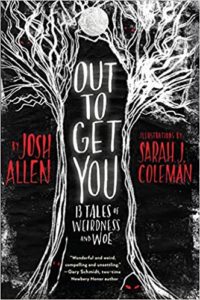
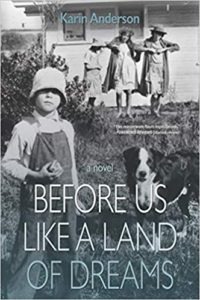
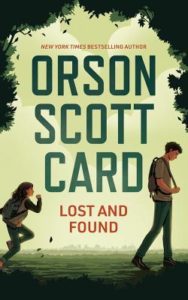
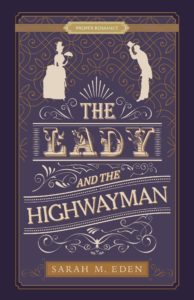
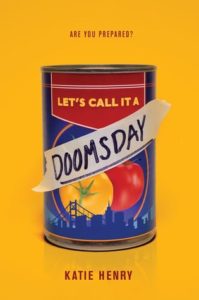
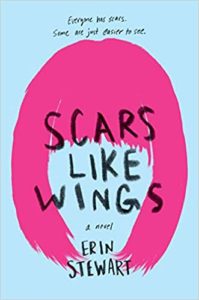
.
Excellent work as always. It’s arguably outside the purview of your collection, but I’m looking forward to this later this month (LDS composer’s show based on a mainstream US novel): https://www.eventbrite.com/e/samson-y-hiss-poison-circus-tickets-66270878983
Thanks, Andrew. Wow. Looks like DJ Butler’s been busy lately.